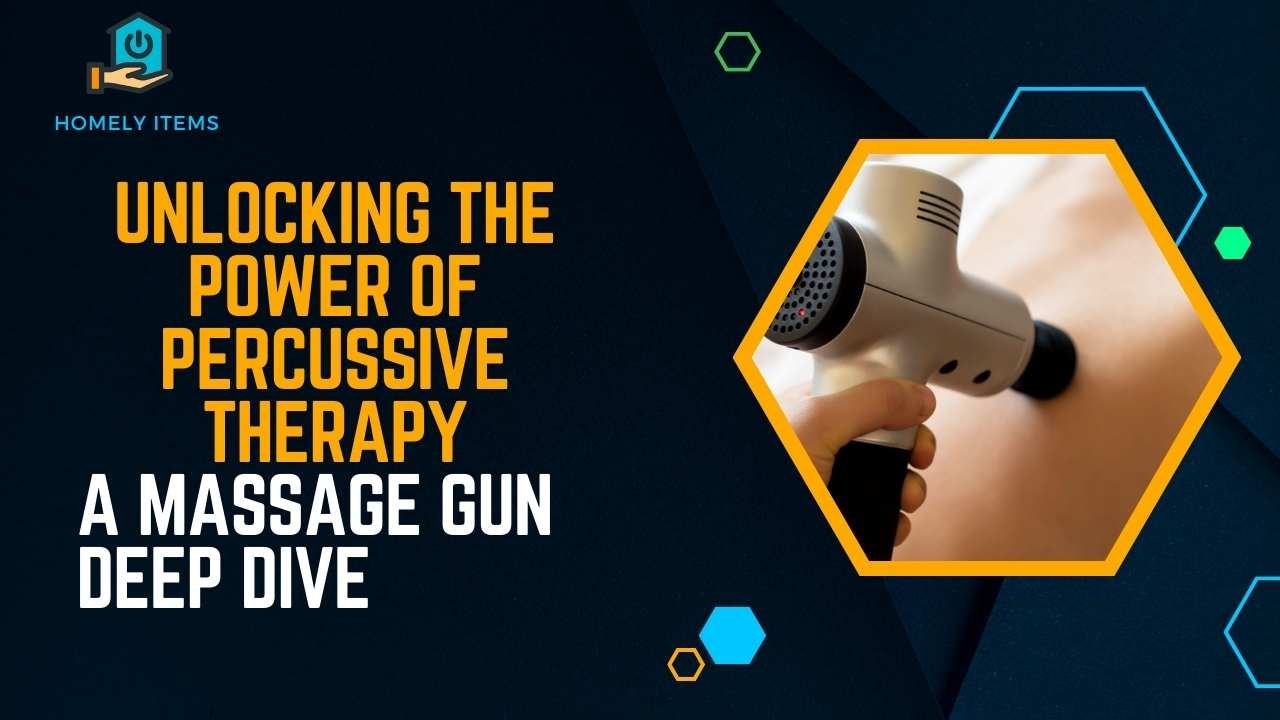In the world of muscle recovery and pain management, two popular tools have taken the fitness and wellness industry by storm: the massage gun and the foam roller. Both of these devices offer unique benefits, but which one is better suited for your needs? In this comprehensive guide, we’ll delve into the differences between massage guns and foam rollers, exploring their mechanisms, advantages, and when to choose one over the other.
In the pursuit of muscle relief and recovery, individuals have long sought out effective methods to alleviate soreness and tension. Two popular contenders in this arena are the massage gun and the foam roller. Both offer unique approaches to muscle care, and the choice between them largely depends on your specific needs and preferences.
Table of Contents
Understanding Muscle Recovery
Before we dive into the specifics of massage guns and foam rollers, it’s crucial to understand the basics of muscle recovery. After intense physical activity or prolonged periods of inactivity, our muscles can become tight, sore, and knotted. Effective muscle recovery techniques aim to alleviate these issues and promote overall muscle health.
The Massage Gun: A Deep Tissue Powerhouse
How Does a Massage Gun Work?
Massage guns, also known as percussion massagers, operate on the principle of percussive therapy. They use rapid, targeted pulses to penetrate deep into muscle tissue, helping to break up knots and increase blood flow. This action mimics the effects of a deep tissue massage performed by a skilled therapist.
Benefits of Using a Massage Gun
- Deep Muscle Penetration: Massage guns target specific muscle groups with precision, making them ideal for addressing stubborn knots.
- Faster Recovery: The increased blood flow and muscle stimulation provided by massage guns can speed up the recovery process.
- User-Friendly: These devices are easy to use and can be applied to various body parts.
The Foam Roller: A Classic Approach
How Does a Foam Roller Work?
Foam rollers, on the other hand, use self-myofascial release (SMR) techniques. By rolling your body over the foam roller, you apply pressure to tight areas, helping to release muscle tension and knots. This approach is akin to a self-administered sports massage.
Benefits of Using a Foam Roller
- Versatility: Foam rollers can be used for a variety of muscle groups and are particularly effective for larger areas like the back and legs.
- Cost-Effective: They are generally more affordable than massage guns.
- Improved Flexibility: Regular use can lead to increased muscle flexibility.

When to Choose a Massage Gun
Intense Workouts and Muscle Knots
If you engage in strenuous workouts or frequently experience muscle knots and tightness, a massage gun may be the better choice. Its ability to target specific areas with precision can provide rapid relief.
Time Efficiency
Massage guns are also advantageous when time is of the essence. A quick session with a massage gun can be more time-efficient compared to a longer foam rolling session.
When to Choose a Foam Roller
General Muscle Maintenance
For general muscle maintenance and addressing larger muscle groups, foam rollers are a practical option. They are especially useful for reducing overall muscle tension and soreness.
Injury Recovery and Prevention
If you’re dealing with specific injuries or aiming to prevent them, foam rollers can help in gently addressing muscle issues without the intense pressure of a massage gun.
The Price Tag: Comparing Costs
When it comes to cost, foam rollers are generally more budget-friendly. Massage guns, while providing exceptional results, can be a more significant investment. Consider your budget when making your choice.
Portability and Convenience
Massage guns are typically more compact and portable, making them suitable for travel and on-the-go relief. Foam rollers, though bulkier, can still be carried around but may require more space.
User Experience and Comfort
Your personal comfort and preference play a vital role in this decision. Some people find the intense percussive action of massage guns invigorating, while others prefer the soothing pressure of foam rolling. Try different things to find which feels the best to you.
Frequently Asked Questions (FAQs)
- Are massage guns safe to use on sensitive areas?
- Yes, but it’s essential to start with the lowest intensity setting and gradually increase as needed.
- Can foam rolling replace the need for a massage therapist?
- While it can be beneficial, it’s not a substitute for professional therapy for certain conditions.
- How often should I use a massage gun or foam roller?
- Frequency varies by individual, but 2-3 times per week is a common recommendation.
- Can I use a massage gun or foam roller if I’m not an athlete?
- Absolutely! Both tools are suitable for anyone looking to improve muscle health.
- What’s the ideal duration for a massage gun or foam rolling session?
- Aim for 10-15 minutes per session, adjusting as needed for your comfort and goals.
Also Read: Massage Gun for Pain Management.
Conclusion: The Right Choice for You
In the massage gun vs. foam roller debate, there is no one-size-fits-all answer. Both tools have their merits, and the choice depends on your specific needs and preferences. Consider factors such as the type of physical activity you engage in, your budget, and your comfort level.
Ultimately, the right choice for muscle relief is the one that helps you stay consistent with your recovery routine. Whether you opt for the precision of a massage gun or the versatility of a foam roller, both can be valuable additions to your fitness and wellness arsenal.





One Comment on “Massage Gun vs Foam Roller: Which Is Better for Muscle Relief?”